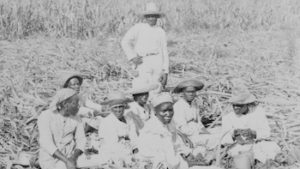
*On this date, in 1886, slavery was abolished in Cuba.
Slavery in Cuba was associated with labor demand to support the sugar cane plantations. It existed on the island of Cuba from the 16th century until it was abolished by royal decree.
The first organized slavery in Cuba was introduced by Spanish colonialists who attacked and enslaved the island's indigenous people. Cuba's original population was eventually destroyed completely, partly due to lethal forced labor, during the 1500s, and the colonialists needed new slave supplies to uphold their reign and production.
More than a million African slaves were brought to Cuba as part of the Middle Passage; Cuba did not end its participation in the slave trade until 1867. As the slaves outnumbered the European Cubans, many Cubans descended from these African slaves, perhaps as many as 65% of the population. Slavery in Cuba was particularly profitable for its slave owners after the Haitian Revolution; after 1804, the newly independent state of Haiti retreated from the global sugar market as its residents focused on subsistence farming. Cuba took its place as the largest sugar producer.
By the mid-19th century, due to the British pressure to abolish slavery, plantation owners transported more than 100,000 Chinese workers to the island. They were held in conditions not very different from those of African slaves.